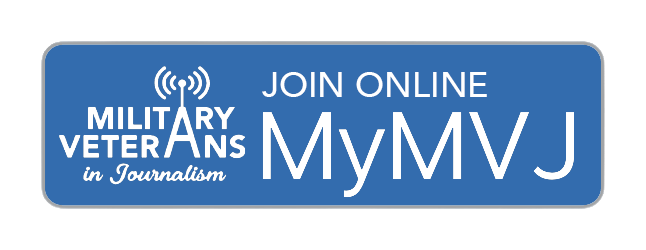Earlier this year, Military Veterans in Journalism and the Ford Foundation launched its Disability Inclusion Program to advocate for better, more nuanced reporting around disabled military veterans. Eleven veterans were chosen to serve as speakers. MVJ organized a training series with top journalists and experts in the disabled veterans and broader disability spaces to discuss these critical issues and teach best practices.
Disabled veterans and the issues that affect them often do not receive proper representation in the media. From “inspiration porn” to outright stereotyping, newsrooms have a history of neglecting their due diligence in coverage on these issues. Inaccurate portrayals of invisible disabilities like post-traumatic stress (PTS) or sweeping assumptions of disabled veterans as a group create misperceptions that harm veterans who are looking for help.
The MVJ training sessions began with a discussion of issues in coverage of disabled veterans with Dan Clare of Disabled American Veterans. Clare spoke on the dangers of using tropes in covering disabled veterans, as the consequences can be disastrous for the community. Sweeping assumptions influence shifts in public perception and harm veterans looking for work or other help. Stories that contain these tropes are often partisan in nature, he explained, so they do not reflect the whole disabled veteran community, and that is a disservice to all veterans.
Instead, Clare advised that journalists must portray veterans in a straightforward, factual way. Reporters have access to plenty of organizations like DAV that are available for resources and fact-checking, and these organizations can connect them with disabled veteran sources. He also advised that journalists should avoid exaggerations and instead take the time needed to build a strong story. Above all, reporters should understand that veterans are never required to disclose the specifics of their disability or that they are disabled at all.
The Speakers Bureau members also learned from Cara Reedy of the Disabled Journalists Association, who provided insight on systemic troubles plaguing disabled veterans. The criminal justice system punishes disabled veterans disproportionately, as approximately one in five male veterans in federal prisons are combat veterans. According to the National Coalition for Homeless Veterans, disabled veterans face harsher outcomes when it comes to homelessness, too.
Reedy asked the Speakers Bureau veterans to consider why so many news stories treat disabled veteran homelessness or incarceration as natural. “Veterans, who are supposed to be taken care of once they are out of combat, are literally falling through the cracks,” Reedy noted. She believes reporters must question where the failures in the system are that lead to these outcomes.
Journalists also need to allow disabled veterans the space and agency to tell their own stories, according to Reedy. Non-disabled people often shape the narrative around disabled issues, leading to inaccurate information and a sense of unimportance. Instead of allowing non-disabled individuals to have this power, Reedy advised that journalists should seek disabled veteran sources who face the impacts of systemic failures.
The final training sessions, led by Wendy Lu of The New York Times, covered best practices for reporting on disabled veterans. Lu reminded members of the Speakers Bureau that many veterans who acquire disabilities through service face a different process of acceptance than civilians who have lived their entire lives with disabilities. She advised that journalists should be aware of and give more space to the recovery and acceptance processes that many disabled veterans go through.
Many disabled veterans have experienced trauma in different forms, and it’s important to avoid potentially triggering them, Lu said. While many people develop a sense of disability pride, that road is not always possible for disabled veterans.
Some veterans don’t have visible disabilities, but instead live with invisible disabilities like PTSD. However, Lu said, invisible disabilities are often stigmatized or outright ignored in coverage. She advised reporters to avoid making assumptions about invisible disabilities and including them when relevant to the story. PTSD and other invisible conditions affect how veterans live and function just like visible disabilities do, and this needs to be recognized in coverage.
After spending the last four months learning from experts on best practices for stronger coverage of disabled veterans issues, MVJ’s Speakers Bureau members will take the tips they have learned and share them with newsrooms across the country, aiming to improve how the news industry covers the disabled veteran community.



